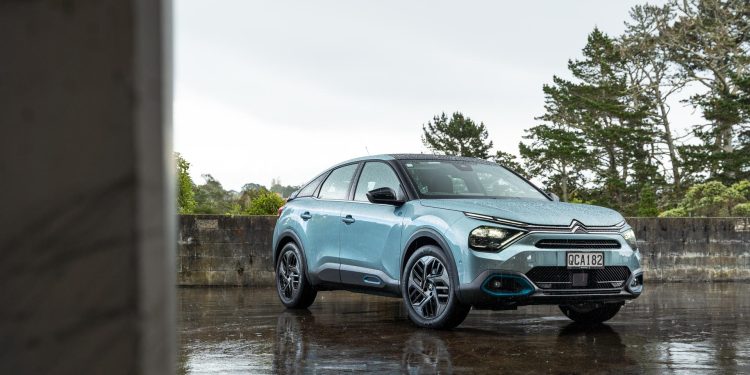2023 Citroen e-C4 Shine
Words: Peter Louisson | Photos: Isaac Western
The C4 is available with petrol or electric power, the latter known as e-C4. Does it have enough individuality for the Francophile?
It came as a bit of a surprise to me when the announcement was made earlier this year. Citroen’s e-C4 was named the most satisfying car to own according to the Driver Power survey out of the UK.
The results were compiled after more than 60,000 new car owners took part in the survey.
How is it that a not especially fast fully electric EV from a not especially big brand can get one over the likes of big name marques like Kia, Lexus, Subaru, Mazda and Toyota?
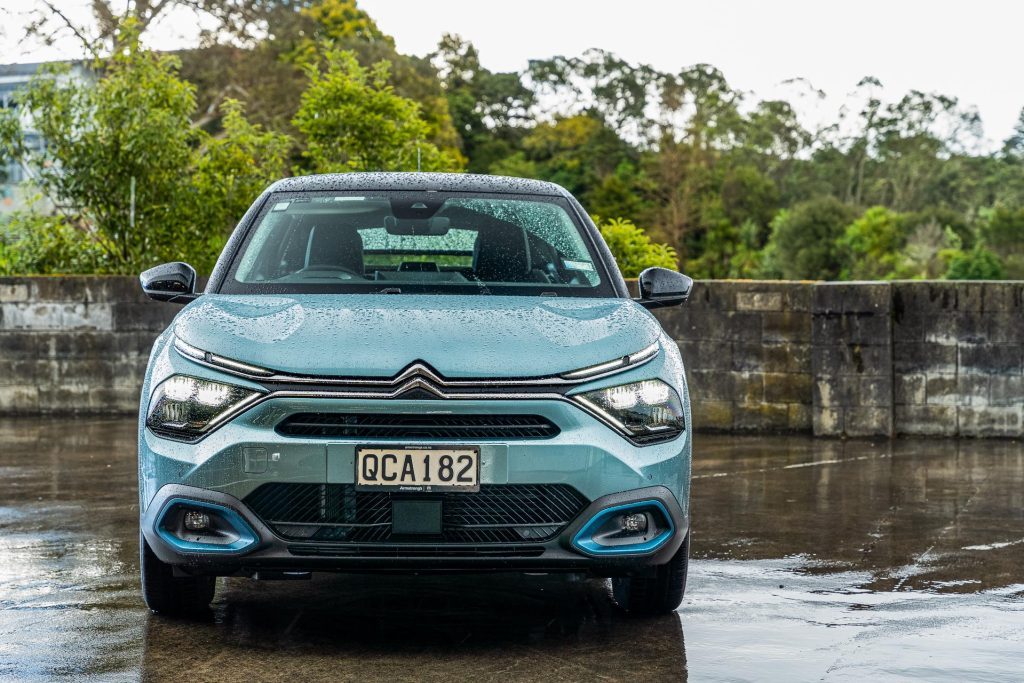
Having driven the car now I’d say it’s because of one thing primarily; the e-C4’s soothing ride. It’s not quite magic carpet-like as the firm claims but it is a bit special.
And it makes the e-C4 one of the most comfortable and somewhat affordable electric cars on sale today.
For this is still a $58,975 vehicle before ORCs and after the government discount of $7k is factored in, along with a $4000 factory bonus. That rebate will disappear in the near future which will slow sales of EVs in the sub $80k area.
There’s clearly one other aspect to this result that’s interesting – people care vastly more about how their cars ride over poor road surfaces than how they handle the twisty bits of road in between the pot holes.
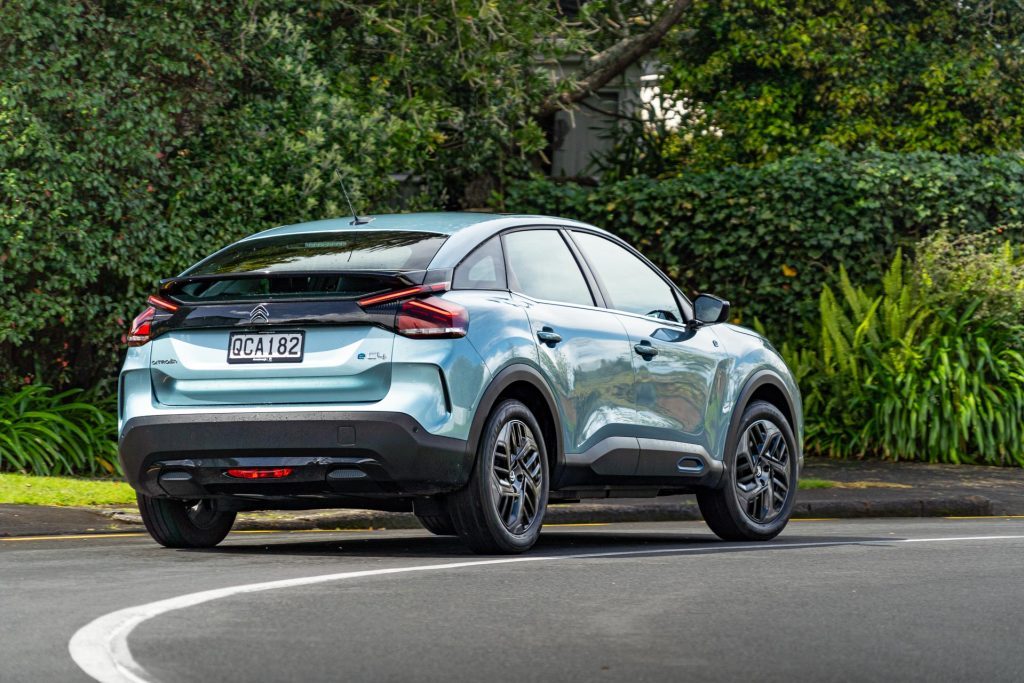
And fair enough too. The rise of the crossover/SUV segment is testament to that (easy ride, quiet progress and practicality over performance and handling).
People appreciate what longer travel suspension and high sidewalls can do for ride quality.
One other thing seems clear; a 0-100 time of around 10 seconds (we got 9.8 for the e-C4) is enough performance for most. And this result shows yet another thing of interest; a 50kWh battery pack and range of 363km is evidently sufficient for many people.
Besides, keeping the battery pack a moderate size also stops the dreaded obesity issue that seems to afflict all medium to large electric machines.
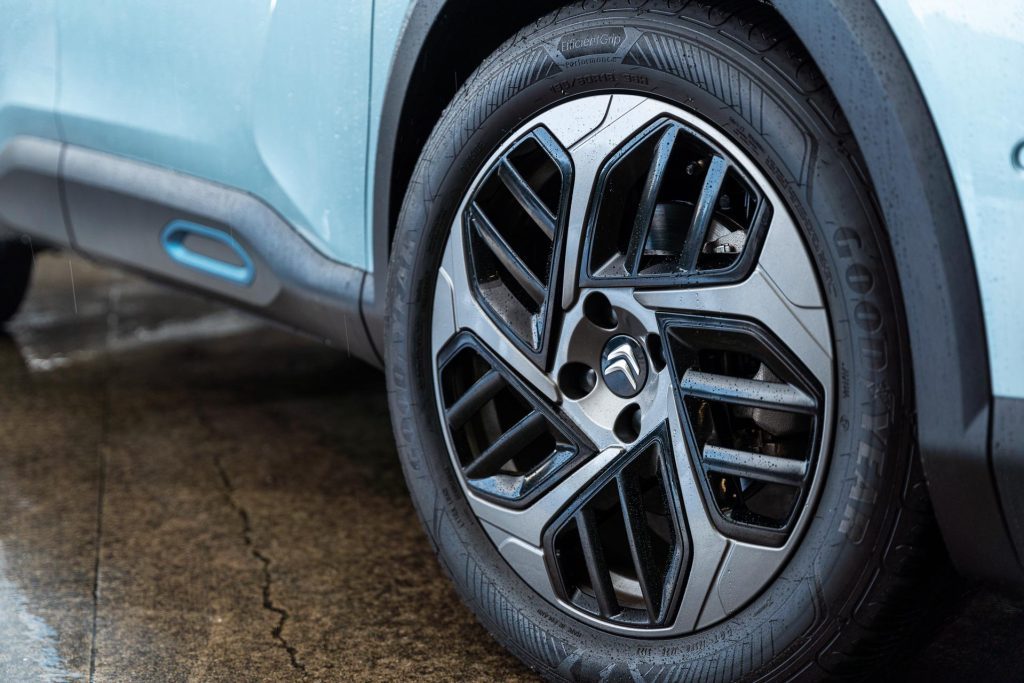
This weighs in at a quoted 1561kg, around 300kg more than the $46,990 ICE power Citroen C4 Shine.
So it isn’t too porky at all and that also helps keep energy use in check, WLTP efficiency rated at 14.5kWh/100km, not to mention reduces wear and tear rates.
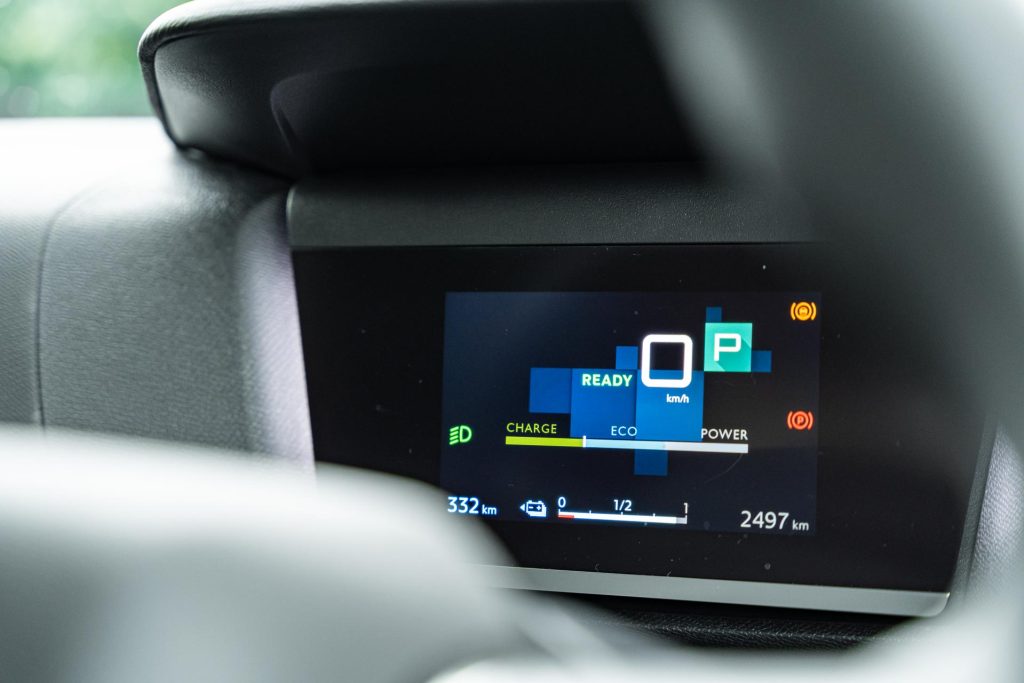
Looks pretty nifty
And so to the C4 you see here, the third generation, sporting Coupe styling, a slightly elevated ride height and the chromed double Chevron Citroen signature up front.
It is really rather an interesting look, slightly different to be sure with the vestiges of air bumps above the sills, marking it out as a Citroen. Discreet e badges signify it’s the e-C4 model.
It probably looks a bit faster than it actually is but who cares with an EV? Daring to be different works in its favour and EVs are still a relative novelty.
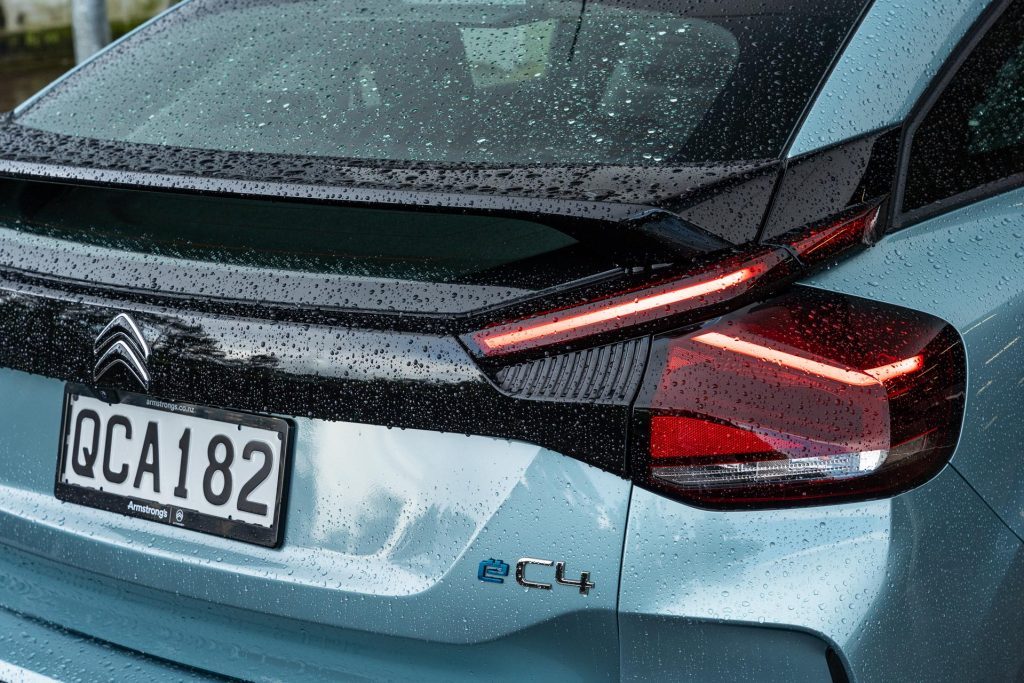
In the default Normal mode you’ll be away and laughing before the turbo opposition is even on boost. In Eco mode there’s palpably less urge, and a message comes up to inform you as much.
It supposedly adds 20-odd kilometres to overall range. Which is repeatedly 360km once fully charged, as promised. That’s not always the case in real world use though.
On the open road around 300km is about it. We had to attend a family incident up north in this and range wasn’t really an issue, though we did take things easy to eke out the kilometres.
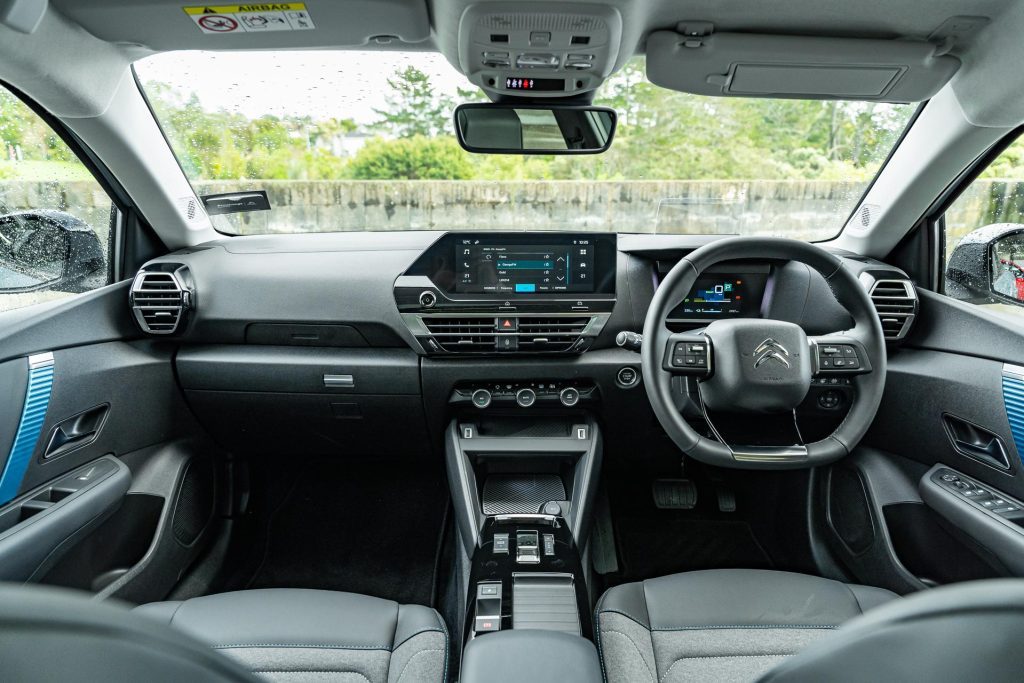
Approach the car and it unlocks itself for you. Walk away and it does the opposite, beeping each time. Handy.
Entry and exit are pretty good because this is slightly elevated like a quirky crossover should be. Small parts of the seats are finished in leather-like material but mainly they’re cloth coverings.
They feel good and while they are fully manual, including lumbar adjust, there are no heating elements. For $3000 you can change all of that (leather, powered and heated).
Once you’re in, there’s a sense of reduced rearward visibility that’s partly the result of the coupe roof line, but more from the small wing attached in the middle of the rear screen.
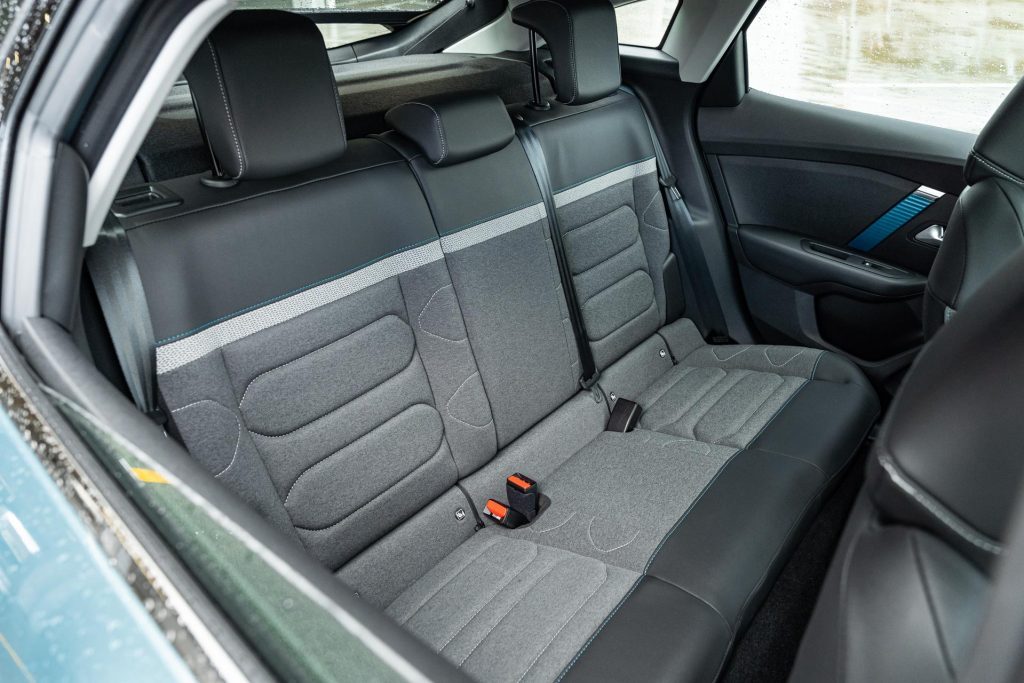
A compact reversing camera image in the small infotainment screen does little to negate this impression.
Up front there’s one of the head-up devices that arise from the dashboard. I’m not a fan of these; despite being transparent they still seem to impinge on forward visibility.
And the volume control on the far left of the dash is a stretch. Sure, there’s volume on the wheel but I’d rather twist a knob to change volume.
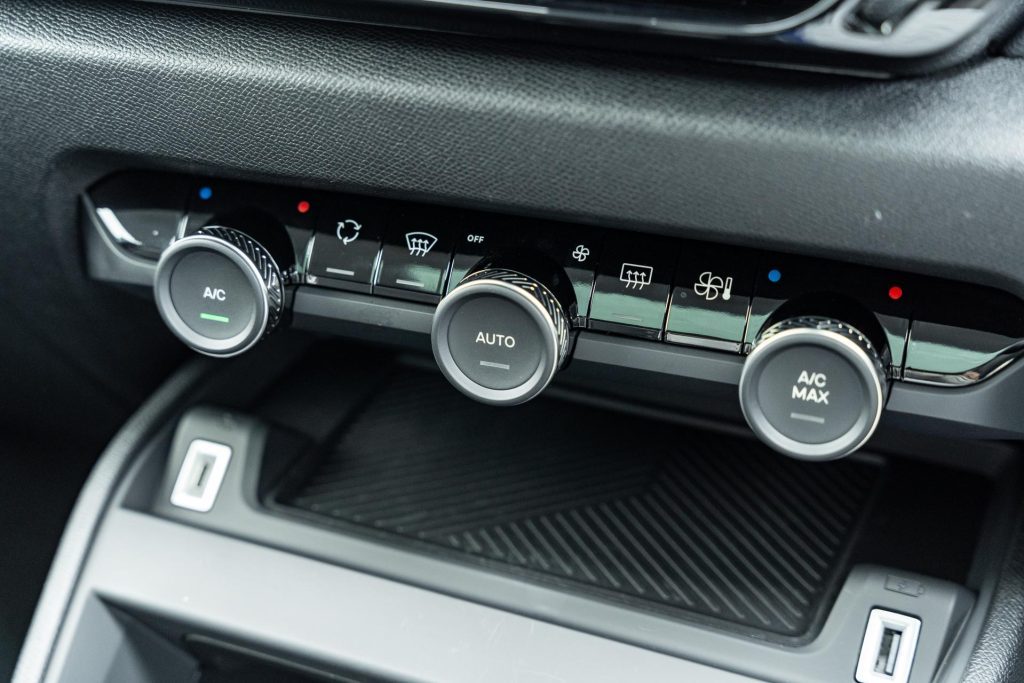
Otherwise, there’s a touchscreen for bits and bobs but there are buttons for the HVAC system and another on the right side to cancel lane keeping. So you can kind of steer clear of the touchscreen on the whole.
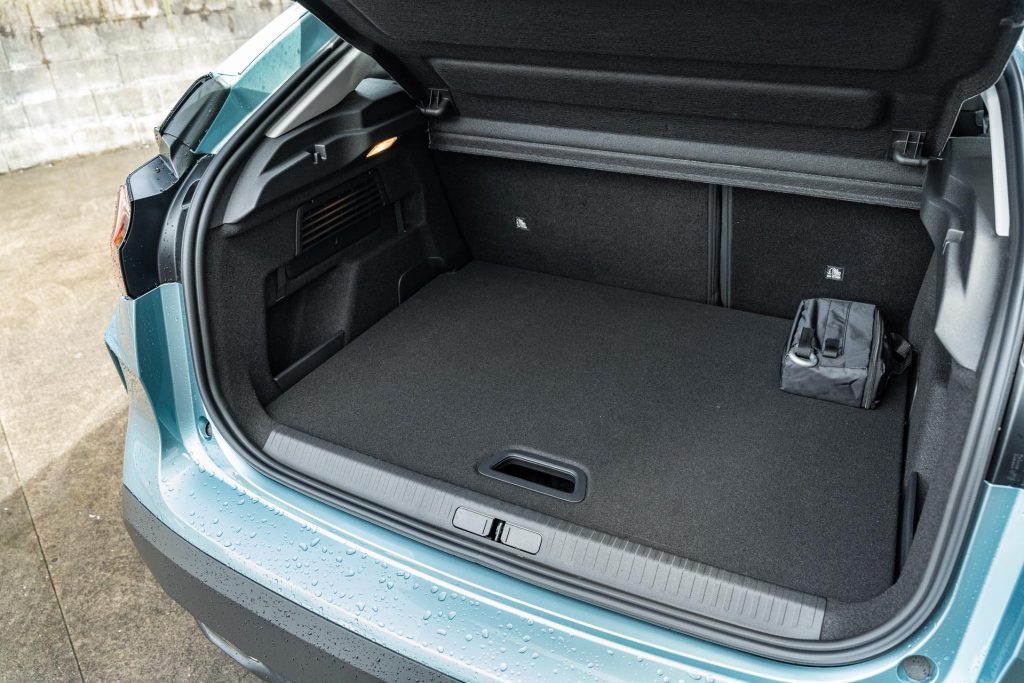
It’s the ride that’s memorable
There’s the usual quirky Stellantis stop and start delay; you must press and hold the starter button to effect either. Despite a few minor irritations, almost all is forgiven once you’re underway.
For progress is plush; this glides over speed bumps. It’s not quite like Hydractive but that was a complex system prone to intermittent failure. Despite the supple suspension, the handling is okay, the mild understeer and minor squealing attributable to its Eco rubber.
There isn’t a huge amount of luggage space (380-1250L) but the floor is movable. There’s also a handy wee space beneath for the emergency charger. The fifth door’s manual.
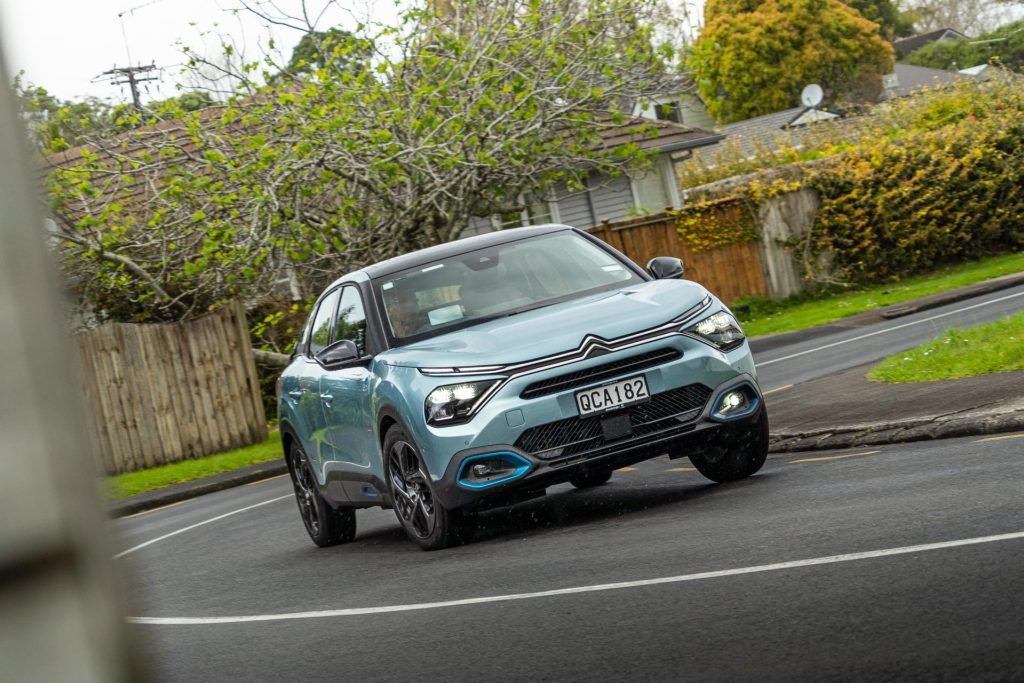
And while there are no seat heaters, the e-C4 comes with a wheel warmer for winter, blue colouring in the vestigial air bumps, a range of seven colours (though you pay $500-$950 for the privilege of not having white), the expected safety bits and bobs (but only enough for a four-star safety rating from ANCAP – no centre airbag), and LED lights with high beam assist.
There’s also adaptive cruise. Other than the optional seat upgrade, there’s a $3k panoramic sunroof that opens, while three- and five-year service plans add $999 and $1699.
The e-C4 goes up against the likes of MG ZS EV, and Opel Mokka-e and Peugeot e-2008 (both Stellantis offerings with shared powertrains). All three are more obviously crossover to behold.
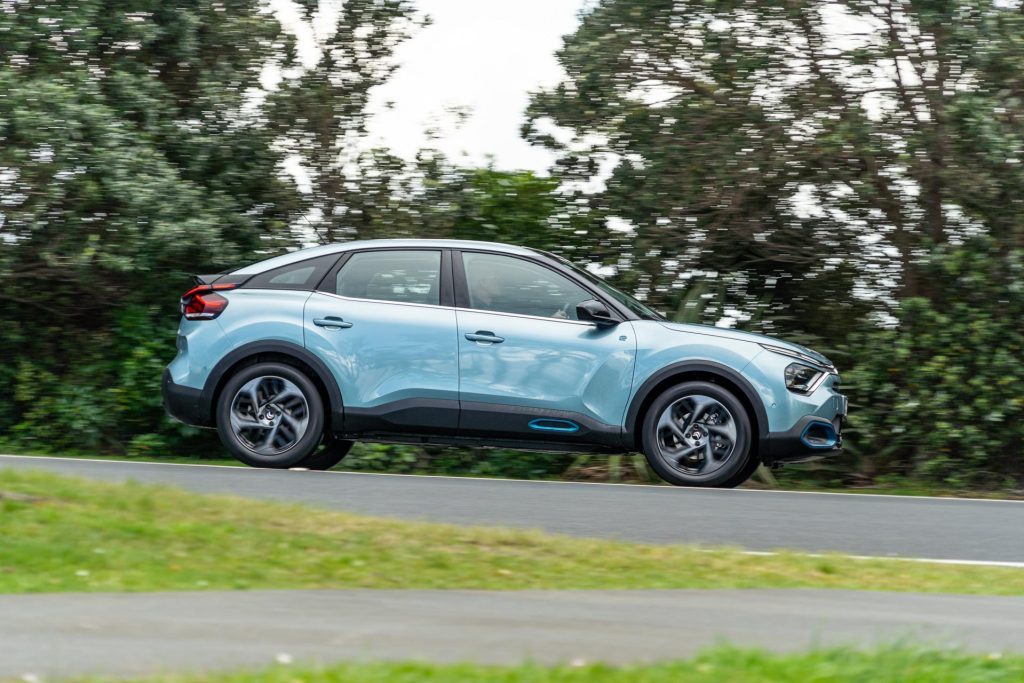
The Opel Mokka-e has been on sale for a time at $50k plus on-roads (a $13k saving) – we’d have it before the MG – while the Peugeot costs the same as the e-C4, only without the factory rebate ($69,990 before clean car rebate).
The Citroen then will still appeal to those who want to be different but without stepping too far outside the box.
Even though the suspension is unique it is still based on what’s considered a conventional set-up, while the drivetrain is a known commodity, and works well, especially for mainly town running.
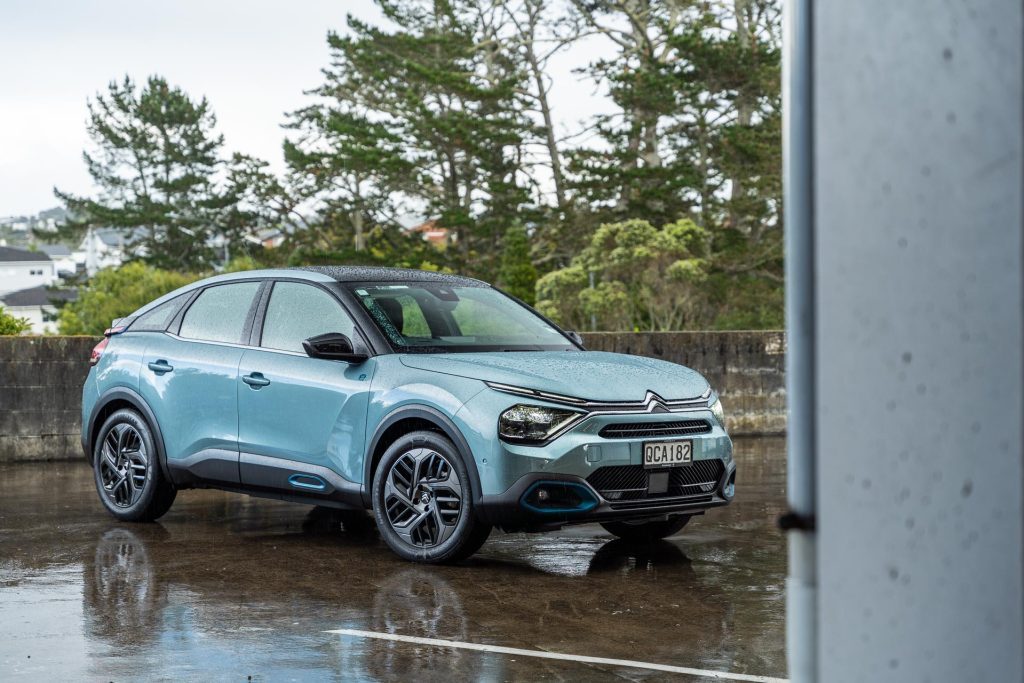
If it’s a plush composed ride you want a piece of, there’s little that can best this in the class.
| Model | Citroen e-C4 Shine |
| Price | $69,990 |
| Clean Car Discount | Rebate – $7,015 |
| Motor | 100kW/260Nm |
| Battery | 50.0kWh net |
| Range | 360km |
| Drivetrain | single-speed auto, FWD |
| Energy Use | 14.5kWh/100km |
| C02 Output | 0g/km |
| 0-100km/h | 9.83sec |
| 80-120km/h | 4.14sec (118m) |
| 100-0km/h | 36.98m |
| Stability systems | ABS, ESP |
| Safety | AEB, ACC, BSM, LDW, RCTA, ALK, AHB |
| Luggage capacity | 380-1250L |
| Tow rating | Not rated to tow |
| Service intervals | 2 years / 26,000km |
| Warranty | 5 year / 100,000km |
| ANCAP rating | 4 Stars (2022) |
| Weight | 1541kg (claimed) |
This article first appeared in the November 2023 issue of NZ Autocar magazine


